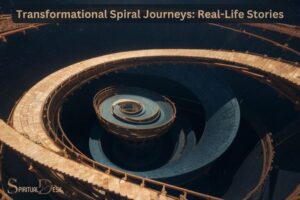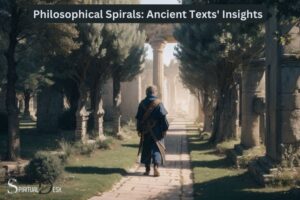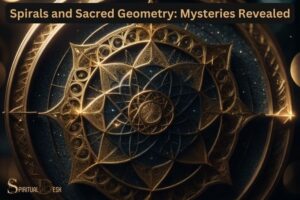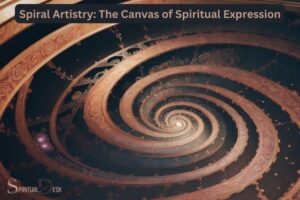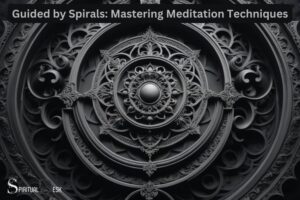Spiral Dance: Unleashing Spirit through Movement
Spiral Dance is a form of spiritual practice that uses movement and dance to connect with and express the inner spirit. It draws on the imagery of spirals, which are powerful symbols in nature and spirituality, representing cycles, growth, and transformation.
Quick Overview
Spiral Dance provides an opportunity for individuals to connect deeply with their own spiritual essence through movement.
By using dance as a medium for spiritual expression, it opens up a unique pathway to explore one’s inner world. Participants often describe experiencing profound insights about themselves and their relationships with others during these dances.
Furthermore, Spiral Dance fosters community building as everyone moves together in unity following the flow of energy.
This collective experience further enhances feelings of interconnectedness not only amongst participants but also with nature’s patterns reflected in the spiraling movements.
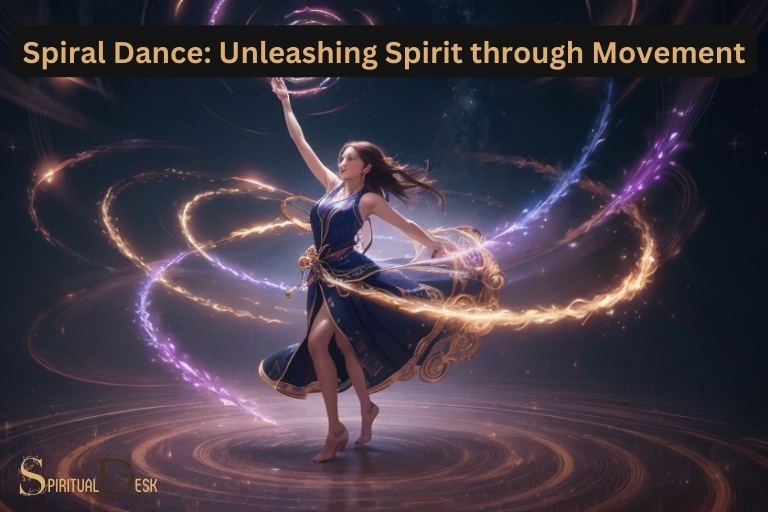
The Role Of Music In Spiritual Dance
Dance has always been an expressive form of movement, transcending cultural boundaries and arousing deep emotions.
In many spiritual and religious traditions, dance is seen as a spiritual practice that connects individuals to a higher power and allows them to cultivate a sense of transcendence and inner peace.
Music, as an integral component of dance, plays a vital role in enhancing this spiritual experience.
Music As A Catalyst For Divine Connection
Music has the power to touch our souls and evoke profound emotions that words alone cannot express. When it comes to spiritual dance, music acts as a catalyst, allowing dancers to connect with the divine on a deeper level.
The rhythmic patterns in music can guide the dancer’s movements, helping them to enter a state of flow and trance-like ecstasy. They allow the music to flow through them, channeling their energy into movements that connect them to something greater than themselves.
Ritualistic And Sacred Music In Dance
In spiritual dance practices, the choice of music is crucial. Ritualistic and sacred music, specifically composed for spiritual ceremonies and practices, holds a unique power to invoke a sense of awe, reverence, and alignment with the divine.
Whether it’s the ethereal chants of Gregorian monks or the invigorating beats of African drumming, this music serves as an enchanting backdrop for spiritual dance.
These sacred melodies and rhythms have been passed down through generations, carrying the essence and wisdom of various cultures and traditions. They have the ability to transport dancers to a different realm, creating a sacred space where they can commune with their inner selves and the divine.
Their movements become a sacred language, transcending words, as they connect with the divine through the melodies and rhythms that intertwine with their physical being.
Ecstatic Dance: Tapping Into The Divine
Dance has long been recognized as a powerful form of artistic expression. It allows individuals to convey emotions, tell stories, and connect with others on a deep level.
But beyond its artistic and physical benefits, dance can also serve as a spiritual practice, helping people tap into the divine. One form of dance that particularly emphasizes this connection is ecstatic dance.
When practiced with intention and mindfulness, ecstatic dance can be a transformative experience, bringing about profound spiritual growth and exploration.
Understanding Ecstatic Dance
Ecstatic dance is a form of freeform movement that encourages participants to fully express themselves through their bodies.
Unlike traditional dance forms, there are no structured moves or choreography to follow. Instead, individuals are encouraged to let go of inhibitions and allow their bodies to freely respond to the music.
This organic and uninhibited style of dance creates a sacred space for self-expression, enabling participants to connect with their own inner wisdom and the divine.
Benefits Of Ecstatic Dance For Spiritual Growth
Engaging in ecstatic dance can bring about a plethora of spiritual benefits. Here are some of the ways in which ecstatic dance can support and enhance one’s spiritual growth:
Deepening the Connection with the Divine:
Ecstatic dance provides a unique opportunity to access the divine energy within and around us. As individuals move freely and surrender to the music, they open channels for spiritual connection.
This direct experience of the divine fosters oneness, transcendence, and spiritual awakening.
Releasing Blocked Energy:
Our bodies can hold onto past traumas, negative emotions, and stagnant energy, which can hinder our spiritual growth. Ecstatic dance provides a safe and sacred space for releasing these blockages.
Through movement and dance, individuals can release pent-up emotions, tensions, and energetic imbalances, allowing for a greater flow of life force energy within them.
Enhancing Intuition and Body Awareness:
Ecstatic dance encourages a strong focus on bodily sensations and movements, fostering a heightened sense of body awareness.
This heightened awareness not only deepens the connection with one’s physical self but also sharpens intuition and inner guidance. Through ecstatic dance, individuals can build trust in their instincts and embody their spiritual truth.
Cultivating Mindfulness and Presence:
Ecstatic dance is a practice that invites individuals to be fully present in the moment. With no set steps or routines to follow, dancers are encouraged to let go of any self-judgment or expectations and simply be with their bodies and the music.
This presence and mindfulness cultivated through ecstatic dance can extend beyond the dance floor, leading to a more mindful and present way of living.
Healing and Transformation:
Ecstatic dance, with its cathartic movement and free emotional expression, can deeply facilitate healing and transformation. It aids in releasing emotional burdens, healing past wounds, and making room for growth and new possibilities.
Whether you’re an experienced dancer or new to movement, ecstatic dance offers a profound transformative experience. Embrace movement’s freedom, surrender to music, and connect with your inner divine to unlock spiritual growth and self-discovery.
The History Of Dance As A Spiritual Practice
Ancient Origins Of Spiritual Dance
Ancient spiritual dance: A powerful tool for exploring and expressing spirituality since the dawn of human civilization. Across cultures, it communicated with the divine, weaving a rich tapestry of human spirituality and sacred connection.
Dance In Shamanism And Rituals
Shamanism, a spiritual practice that dates back thousands of years, has long utilized dance as a central component of its rituals.
Shamans, or spiritual leaders, would often enter altered states of consciousness through rhythmic movement, allowing them to connect with the spirit world and receive divine guidance.
Dance was believed to facilitate the channeling of spiritual energy, enabling shamans to communicate with ancestors, gods, and other non-physical entities.
In addition to shamanism, dance also played a vital role in religious rituals and ceremonies throughout history. For example, in ancient Egypt, sacred dances were performed in honor of the gods during temple ceremonies.
These dances were highly structured and symbolic, with each movement conveying a specific meaning or invoking a particular deity.
Similarly, in Hinduism, various forms of dance, such as Bharatanatyam and Odissi, are considered an offering to the gods and are performed as a means of worship.
Throughout different cultures and time periods, dance has been embraced as a tool for spiritual expression and connection.
Whether through trance-inducing movements in shamanic rituals or the intricate steps of a religious ceremony, dance has the power to transcend physical boundaries and unite the spiritual and physical realms.
Connecting The Body And Spirit Through Movement
Dance isn’t just physical but a sacred expression linking body and spirit. It enables dancers to connect with their inner selves, transcending physical boundaries to reach the divine. This article explores dance’s profound spiritual dimension and its soul-healing and uplifting effects.
The Power Of Physical Expression In Dance
Dance’s physical expression holds a unique, wordless power. Dancers convey emotions, thoughts, and experiences through precise movements, forging a profound connection with their audience.
Dance provides an outlet for pent-up emotions and trapped energy, serving as catharsis. It enables emotional release, liberation, and fosters self-awareness and introspection.
Spiritual Healing Through Dance
Dance is a potent tool for spiritual healing, uniting body, mind, and spirit. It brings profound transformation and renewal by harmonizing energy centers through rhythmic movements and music.
Across cultures, dance serves as prayer, connecting with the divine, offering guidance, healing, and enlightenment. Meditative dances like whirling dervishes or ecstatic dance induce altered states for spiritual awakening.
Dance catalyzes personal growth and self-discovery. Exploring physical and spiritual aspects, it uncovers hidden talents, overcomes limitations, and unleashes potential.
Dance As A Form Of Worship In Different Religions
Dance is a vital aspect of human expression and spirituality, integrated into various religions as a form of worship.
Here, we delve into how different religions embrace dance as a spiritual expression within their traditions.
Hinduism: Bharatanatyam And Odissi
In Hinduism, dance connects devotees with the divine. Bharatanatyam and Odissi are two classical dance forms deeply rooted in Hindu rituals and mythology.
Bharatanatyam, originating in Tamil Nadu, involves intricate movements, facial expressions, and hand gestures (mudras).
It is performed to Carnatic music, often depicting stories from Hindu epics like the Ramayana and Mahabharata. Bharatanatyam’s grace and footwork serve as a devotional offering.
Odissi, from Odisha, features sensuous postures and delicate movements, drawing inspiration from temple sculptures and ancient texts. It aims to evoke devotion (bhakti) in both the dancer and the audience.
Sufism: Whirling Dervishes
In Sufism, dance is a path to union with the divine. Whirling, practiced by the Mevlevi Order, is a spiritual dance known as “Sema.” Dervishes’ whirling symbolizes the soul‘s journey toward enlightenment.
Inspired by the teachings of the poet and mystic, Rumi, the whirling dervishes enter a profound state of meditation, revolving in a continuous circle while wearing long white skirts that fan out gracefully with each turn.
This poetic dance serves as a spiritual practice, enabling Sufis to detach from worldly distractions and achieve a state of nearness to God.
Native American Spirituality: Powwows And Tribal Dances
Native American spirituality emphasizes dance in communal gatherings and ceremonies, such as powwows. These events showcase intricate dances honoring ancestral traditions and celebrating indigenous heritage.
Tribal dances at powwows often mirror the natural world, with dancers imitating animals or elements. Through rhythmic movements, colorful regalia, and traditional drumbeats, Native Americans connect to ancestors and the land’s spirit.
These dances also transmit cultural knowledge and values from one generation to the next, fostering community and spiritual connections.
Finding Spiritual Connection Through Dance Meditation
Explore dance meditation for spiritual connection. Learn about the connection between movement, mindfulness, and techniques to enhance your practice in this blog post.
Movement And Mindfulness
When it comes to spiritual expression, movement plays a vital role in connecting our bodies, minds, and spirits. Through dance, we engage in a flowing physical language that can serve as a conduit for spiritual energy. As we move our bodies with intention and awareness, we tap into the present moment, cultivating a deep sense of mindfulness.
By focusing on each step, each sway, and each breath, we bring our attention fully into the present, allowing our consciousness to expand beyond the limitations of the mind. Dance becomes a powerful tool for releasing stagnant energy, inviting fresh insights, and creating a sacred space within.
Practicing Dance Meditation Techniques
Dance meditation combines movement, music, and intention for divine connection.
Enhance your practice with these techniques:
- Choose a Sacred Space: Find a quiet and dedicated space where you can express yourself freely without any distractions. This space can be indoors or outdoors, as long as it feels sacred to you.
- Select Music that Resonates: Music serves as a catalyst for dance meditation, guiding your movements and evoking specific emotions. Choose music that resonates with your soul and amplifies the spiritual experience.
- Set an Intention: Before you begin dancing, take a moment to set an intention for your practice. Whether it’s self-discovery, healing, gratitude, or connection, aligning your intention with your heart’s desire will infuse your dance with purpose and meaning.
- Express Yourself Authentically: Release any inhibitions and allow your body to move freely, expressing your authentic self. Let go of self-judgment and embrace the beauty of your unique dance as a manifestation of your inner spirit.
Remember, dance meditation is a personal and intimate practice that can be adapted to your own style and preferences. Allow yourself to surrender to the rhythm, letting it guide you on a soulful journey towards spiritual connection.
Conclusion
Dance, in its essence, is more than just movement to music. It is a spiritual expression that transcends the physical realm and connects us with our deepest selves. Through dance, we tap into our innermost emotions, allowing our bodies to speak the unspoken.
It is a universal language that crosses cultural boundaries, allowing us to connect with others and find solace in our shared humanity. Let our movements be a manifestation of our souls, and let the rhythm guide us towards a deeper understanding of ourselves and the world around us.
Dance on, and let your spirit soar.

